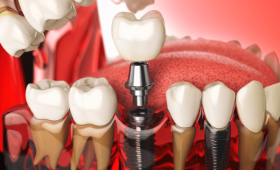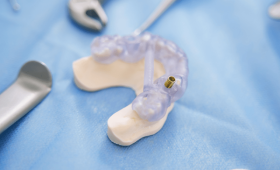What Exactly Is Diastema?
Diastema is the medical term used for visible gaps between the teeth, particularly those seen between the two upper front teeth. This condition can be an entirely normal anatomical variation or can result from various factors such as a discrepancy between tooth size and jawbone size, missing teeth, an overly developed labial frenulum (lip tie), or incorrect swallowing habits.
While diastema is generally perceived as an aesthetic concern, in certain instances, it can also impact gum health and speech functions. The presence and magnitude of these gaps play a pivotal role in determining the appropriate treatment method and necessitate a customized evaluation tailored to the individual’s specific oral condition and health profile.
Why Do Gaps Between Teeth Occur?
Gaps between teeth can arise due to several distinct reasons. One of the most common causes is a disproportionately small tooth size compared to the jawbone, or a jawbone size that is large relative to the teeth; this prevents teeth from aligning properly and leaves spaces. Another frequent cause is an overdeveloped frenulum, which is the thin tissue connecting the upper lip to the gum line, physically blocking the front teeth from moving closer together. Furthermore, missing teeth, a history of prolonged thumb-sucking, an incorrect swallowing pattern (where the tongue pushes against the front teeth), and teeth shifting due to periodontal diseases can all contribute to gap formation.
Should Diastema Be Treated?
Treatment for Diastema is not typically a mandatory medical intervention but rather depends on the patient’s aesthetic concerns and functional needs regarding their teeth. If the gaps significantly affect a person’s smile aesthetics and cause psychological distress, treatment is highly recommended. From a functional perspective, treatment should be planned to prevent long-term issues if the gaps lead to speech (articulation) problems, encourage habits like incorrect swallowing, or are caused by an excessively developed frenulum. The decision to treat or not must be made following a comprehensive examination and a thorough assessment of the patient’s expectations and overall oral health.
What Happens If The Gap Between Teeth Is Not Closed?
If the gap between the teeth is not closed, it usually does not pose a major health risk, but certain issues may arise over time. The most notable effect is the aesthetic concern that lowers the person’s self-confidence. Functionally, the tooth gaps can easily trap food, leading to gum inflammation (gingivitis) and gum recession, which negatively impacts long-term periodontal health. Additionally, especially with large front tooth gaps, articulation problems such as the inability to pronounce certain sounds correctly or the creation of a lisping sound during speech may occur. Therefore, failure to close the gap can lead to hygiene and speech problems that extend beyond mere aesthetics.
At Which Ages Is Diastema More Common?
Diastema is quite common and usually temporary during the mixed dentition period (around 6 to 8 years of age), which is when baby teeth are shed and permanent teeth begin to erupt. These gaps tend to close naturally as permanent teeth continue to erupt, particularly when the canine teeth (eyeteeth) settle into their positions. However, if the gaps persist after adolescence or once permanent dentition is complete, this indicates a permanent skeletal or dental issue. Diastema observed in adults is typically a permanent condition requiring aesthetic and functional treatment intervention.
What Are The Types Of Diastema?
Diastema can be classified into different types based on its location and the underlying cause of its formation. The most frequently encountered type is the “median diastema,” which forms between the upper central incisors. Other types include “lateral diastemas,” which occur between the lateral incisors or other teeth. Based on the etiology, subtypes include “genetic diastema” arising from a tooth size-to-jaw size discrepancy, “frenulum-related diastema” caused by the labial frenulum, and “pathological diastema” resulting from forces like gum disease or incorrect swallowing. Each type necessitates a different treatment approach.
How Does Gum Health Affect Diastema?
Gum health, especially in cases of advanced gum disease (periodontitis), can directly cause or exacerbate Diastema. Periodontal disease is characterized by inflammation and gradual destruction of the bone and supporting tissues that hold the teeth in place. This destruction can cause teeth to loosen and shift from their normal positions, leading to the formation of gaps between them. Even if Diastema treatment is performed in a mouth with poor gum health, the progression of the disease may cause the teeth to move again. Therefore, it is essential that gum diseases are completely controlled before initiating any Diastema treatment.

Do Gaps Between Teeth Close On Their Own?
The potential for gaps between teeth to close on their own depends on the age at which the gap occurs and its underlying cause. Gaps occurring during the childhood period (mixed dentition) often close spontaneously due to the natural pressure exerted by the erupting permanent canine teeth; this stage is sometimes referred to as the “ugly duckling stage.” However, gaps that appear in adulthood or after permanent dentition is complete will not close as long as an underlying force (e.g., overdeveloped frenulum, incorrect tongue thrusting) or structural problem (e.g., small teeth) remains. Such permanent Diastemas require intervention from a dental professional.
Are Orthodontic Methods Used In Diastema Treatment?
Yes, orthodontic methods are frequently and successfully used in the treatment of Diastema. These methods provide the most comprehensive and natural-looking results for gap closure. Orthodontic treatment ensures that the gap is closed by controlled movement of the teeth, leading to the correct alignment of all teeth. Traditional metal braces, clear ceramic braces, or clear aligners can be used for this purpose. Orthodontics is the preferred ideal treatment option, especially when Diastema is present in multiple tooth gaps or when combined with general teeth crowding.
How Long Does Orthodontic Treatment Take?
The duration of orthodontic treatment for Diastema varies significantly depending on the size of the gap, the patient’s overall teeth alignment issues, and the chosen method. Closing a small gap between just the two front teeth can be completed in a few months with clear aligners. However, if the gap is caused by an overdeveloped frenulum or if there are general alignment issues, the treatment duration typically extends from 6 months up to 18 months. The dentist can provide an estimated timeframe after a detailed examination and treatment planning session is completed.
Is The Bonding Method Suitable For Diastema?
Bonding (Composite Resin Application) is highly suitable as one of the fastest, most conservative, and least invasive methods in Diastema treatment. In this technique, a special tooth-colored filling material (composite resin) is applied directly to the edges of the gap to close the space immediately and improve the tooth’s appearance, without the need for filing or etching the tooth structure. Bonding is ideal for small to medium-sized gaps and is usually completed in a single session. It is an excellent alternative for patients who seek quick results while preserving their natural tooth structure.
How Permanent Is The Bonding Procedure?
The permanence of the Composite Bonding procedure depends on the quality of the material used, the size of the gap, and, most importantly, the patient’s oral hygiene and dietary habits. Although bonding materials are quite durable, they are not as hard as porcelain. They generally last between 5 and 10 years, but staining (discoloration) or minor chipping may occur during this time. Regular dental check-ups, correct brushing techniques, and cautious consumption of hard foods are key factors in extending the lifespan of the bonding. Small repairs or re-polishing can restore the luster when necessary.
Can Diastema Be Closed With Porcelain Veneers?
Yes, Porcelain Veneers (Laminates) are one of the most aesthetic and durable solutions in Diastema gap closure treatment. Veneers are thin, custom-made porcelain shells bonded to the front surface of the teeth. This method allows for permanent improvement of the teeth’s color, shape, and size, in addition to closing the gap. Porcelain Veneers are preferred especially when there are slight shape irregularities or permanent discolorations along with the gap. A minimal amount of enamel reduction may be performed on the tooth surface before application, or sometimes they can be applied with no reduction at all.
Who Is Suitable For Porcelain Veneer Treatment?
Porcelain Veneer treatment is generally applied to adult patients who have high aesthetic expectations, large or complex Diastema, permanent color or shape irregularities in their teeth, and are looking for a fast, durable solution. This treatment is ideal for patients who either lack the time for orthodontic treatment or desire a longer-lasting, brighter, and more stain-resistant result than what a Bonding application can provide. However, for patients with habits such as teeth grinding (bruxism), additional measures like wearing a night guard may be necessary to minimize the risk of veneer fracture.
Are There Situations Where Surgery Is Required In Diastema Treatment?
Yes, there is a specific condition in Diastema treatment that requires surgical intervention: Excessively Developed Labial Frenulum (Frenectomy). The frenulum is the muscle band connecting the upper lip to the gum line, passing between the two front teeth. If this band is thicker than normal or positioned too close to the teeth, it physically prevents the two front teeth from coming together, causing Diastema. In this case, before the teeth are moved orthodontically, the frenulum must be surgically cut (frenectomy) and repositioned. Frenectomy is typically the first step of treatment when it is the main cause of the Diastema.
How Is A Frenectomy (Lip Tie Surgery) Performed?
Frenectomy is a relatively simple surgical procedure performed under local anesthesia, lasting approximately 10-15 minutes. The excessively developed or thickened labial frenulum is cut and repositioned using a scalpel or, more commonly nowadays, a laser. The use of a laser minimizes bleeding and accelerates the healing process, often eliminating the need for sutures. Following this surgical procedure, orthodontic treatment will be required to fully close the gap; this is because the surgery does not guarantee spontaneous closure of the gap, it merely removes the physical obstruction.
What Should Be Considered Before Diastema Treatment?
The most important point to consider before starting Diastema treatment is determining the exact cause of the gap through a comprehensive oral and dental examination. Before treatment, all existing dental caries and gum diseases must be completely treated, as a healthy foundation is a prerequisite for successful treatment. If an overdeveloped frenulum is the cause of the gap, a frenectomy operation should be planned first. Furthermore, it is crucial that the patient has realistic expectations regarding the treatment and makes a joint decision with the dentist about which method (Bonding, Veneers, Orthodontics) is most appropriate for their needs.

How Should Dental Care Be After Treatment?
Dental care after Diastema treatment varies depending on the chosen method. If Bonding or Porcelain Veneers were applied, excessive consumption of color-staining foods and drinks (tea, coffee, red wine) should be avoided to ensure the longevity of the restorations. In all cases, regular and correct brushing, flossing, or using interdental brushes is essential; special attention should be paid to the area where the gap was closed. If orthodontic treatment was performed, meticulous compliance with Retainer (retention appliance) usage is mandatory to keep the teeth in their new positions, and regular check-ups every six months should not be neglected.
Can Gaps Reopen After Treatment?
Unfortunately, even if Diastema treatment is successful, there is a risk of the gaps reopening (relapse), but this risk can be minimized with correct precautions. The most common cause of relapse is the continuation of forces that caused the gap (e.g., incorrect tongue thrust, frenulum remnants) or, most importantly, non-compliance with the regular use of Retainer appliances after orthodontic treatment. Permanent retainers (a thin wire bonded behind the teeth) or removable clear retainers applied after treatment ensure that the teeth maintain their new positions. Adherence to this retention phase is vital for the permanence of the result.
Does Diastema Cause Problems Other Than Aesthetic Issues?
Diastema can lead to oral health and functional problems beyond aesthetic concerns. The presence of gaps can lead to lisping during speech, causing articulation difficulties. Additionally, food getting trapped between the teeth during eating can cause constant irritation and inflammation of the gums (gingivitis) in that area, inviting long-term periodontal diseases. Incorrect swallowing habits (tongue pressing on the teeth) can also cause the gaps to widen over time and lead to the movement of other teeth, disrupting the entire oral structure.
Does Diastema Affect Speech (Articulation)?
Yes, particularly large front tooth gaps (median diastema) can negatively affect speech (articulation), with lisping being the most common issue encountered. To correctly pronounce certain sounds (especially “s” and “z” sounds), the tongue needs to be correctly positioned behind the front teeth. Diastema disrupts the necessary seal for this position, causing air to escape uncontrollably and resulting in the unwanted lisping sound. Diastema closure treatment contributes significantly to the normalization of speech by resolving this underlying problem.
Is Treatment Possible For Multiple Tooth Gaps?
Yes, multiple Diastema, where there are several gaps between the teeth unlike a single gap, can be treated and are usually addressed with orthodontic methods. Orthodontic treatment closes all the gaps between the teeth simultaneously and in a coordinated manner, ensuring that all teeth achieve a symmetrical and correct alignment. This offers a more comprehensive and permanent solution compared to localized fixes like Bonding or Porcelain Veneers. Since multiple Diastema often results from a tooth-to-jaw size discrepancy, orthodontic treatment that addresses the entire oral structure provides the best aesthetic and functional outcome.
Is Diastema Closure Treatment Different For Adults?
Diastema closure treatment in adults may require different approaches compared to children. While some gaps may close spontaneously in children, gaps are permanent in adults and strictly require intervention. The condition of the adult’s gum health (especially gum recession or loss) can influence the gap closure process. Because adults often prioritize aesthetic and fast solutions, cosmetic options like clear aligners (orthodontics), Bonding, or Porcelain Veneers are frequently chosen. Since the bone structure is harder, orthodontic movements might be slightly slower, but the treatment process and results are typically very successful.
Are Clear Aligners Used In Diastema Treatment?
Yes, Clear Aligners are a very popular and effective method in Diastema treatment for patients seeking an aesthetic and comfortable solution. These aligners, prepared with special computer-aided planning, apply gentle and continuous force to the teeth, allowing the gaps to close gradually. Since they are transparent, they are almost invisible and can be removed during meals and brushing, offering a great advantage in terms of hygiene and comfort compared to traditional braces. This method is preferred, especially for the treatment of mild to moderate Diastemas.
Is Clear Aligner Treatment Better Than Braces?
Clear aligner treatment offers different advantages rather than being “better” than traditional braces. Clear aligners are aesthetically superior, making the treatment virtually invisible, and their removability makes maintaining oral hygiene easier. However, in very complex or large Diastema cases, traditional braces may provide more precise control over tooth movements. Aligners require disciplined use (they must be worn for at least 20-22 hours a day). Which method is superior is determined by the dentist based on the patient’s aesthetic expectations, lifestyle, and the complexity of the Diastema.
Is Diastema Treatment Painful?
Diastema treatment is generally not a severely painful process, although it varies depending on the chosen method. Direct cosmetic applications like Bonding or Porcelain Veneers are completely painless and usually do not even require anesthesia. In orthodontic treatments (braces or clear aligners), it is normal to feel slight pressure and sensitivity for the first few days as the teeth begin to move. This discomfort is easily managed with simple pain relievers and quickly subsides as the teeth adapt to the force. Surgical frenectomy is painless as it’s performed under local anesthesia, and the recovery process is usually fast and comfortable.

What Are The Eating And Drinking Restrictions During Treatment?
Eating and drinking restrictions during Diastema treatment are determined by the applied method. If Bonding was performed, dark-colored foods and beverages (tea, coffee, red wine) that can cause staining should be avoided for the first 48 hours. If traditional braces are used, hard, sticky, and crunchy foods are completely forbidden to prevent the wires from breaking. If clear aligners are used, there are almost no eating and drinking restrictions since the aligners are removed during meals, but nothing other than water should be consumed while the aligners are worn. Adhering to the clinician’s instructions is essential for the success of the treatment and the protection of the appliances.
How Is A Single Tooth Gap Closed?
A single tooth gap, typically the space between the two front teeth (median diastema), is addressed using several closing methods. The fastest and most conservative method is Composite Bonding, where composite material is added to the sides of the teeth to close the gap. If the gap is large or the aesthetic expectation is very high, Porcelain Veneers applied to the front surfaces of the teeth may be preferred. If the cause of the gap is related to tooth position, short-term orthodontic treatment (mini braces or clear aligners) is used to bring the teeth closer together. The dentist will choose the most appropriate method based on the size of the gap and the patient’s budget.
Is Retainer Use Mandatory After Diastema Treatment?
Yes, the use of a Retainer (retention appliance) is absolutely mandatory after Diastema treatment and is the most critical phase of the treatment. Teeth have a tendency to return to their original positions after being moved, a phenomenon known as relapse. Retainers are designed to ensure that the teeth stay in their new, correct positions. Most often, a thin wire permanently bonded behind the teeth (fixed retainer) and removable clear aligners worn at night (removable retainer) are used in combination. Failure to meticulously comply with retainer use will lead to the reopening of the tooth gap.
What Is The Success Rate Of Tooth Gap Closure Treatment?
The success rate of tooth gap closure treatment is quite high with correct diagnosis, selection of the appropriate treatment method, and patient compliance with post-treatment care. The success rate is over 90% in orthodontic treatments, provided correct retention is applied. Immediate and high aesthetic success is achieved with Bonding and Porcelain Veneer applications. The key to permanent success is the lifelong use of a Retainer to maintain the teeth’s new position after the underlying cause of the gap (e.g., frenulum) has been eliminated. Failure usually results from neglecting the retention phase.
What Determines The Cost Of Tooth Gap Closure?
The cost of tooth gap closure varies greatly depending on the selected treatment method (Bonding, Veneers, Orthodontics), the scope of the treatment (single gap or multiple gaps), the quality of the material used, and the total treatment duration. Composite Bonding is generally the most cost-effective option. Porcelain Veneers have a higher cost depending on the type of porcelain used. Orthodontic treatment varies based on its total duration and the type of appliance used (metal, ceramic, clear aligner). Precise pricing can only be provided after a dental examination and detailed planning.
Is There An Age Limit For Diastema Treatment?
There is no upper age limit for Diastema treatment; any adult can be treated as long as they have suitable oral health. However, the age at which treatment begins is important for the cause of the Diastema. While gaps in children’s primary teeth are usually monitored, the optimal treatment time for gaps in permanent teeth is often during adolescence. Diastema treatment in adults usually focuses on aesthetic solutions. The lower age limit generally relates to the onset of permanent dentition and the identification of the underlying problem (e.g., frenulum), although simple Bonding applications can be performed at younger ages.
Does Discoloration Occur In Diastema Treatment?
Discoloration in Diastema treatment depends on the selected treatment method. Porcelain Veneers do not change color over time because they are porcelain and maintain their initial brightness. However, tooth gaps closed with Composite Bonding may undergo slight discoloration over time due to the nature of the composite material, which can be affected by foods and drinks (especially coffee, tea, and tobacco). Therefore, patients who have undergone Bonding are advised to have regular dental check-ups and re-polishing procedures to prevent staining. The tooth’s natural color does not change with orthodontic treatment.
Should Teeth Whitening Be Done Before Diastema Treatment?
If Bonding (Composite) or Porcelain Veneers are to be used in Diastema treatment, performing teeth whitening (bleaching) before the treatment is highly recommended. The reason is that the color of the filling or porcelain materials is matched to the existing tooth color, and these materials do not react to whitening gels. After the teeth whitening procedure, it is necessary to wait until the tooth color stabilizes (usually 2 weeks), and the closure material is then selected to match the new, whiter tooth shade. This ensures the integrity of the smile and the most aesthetic final result.
How Long Does The Diastema Closure Procedure Take?
The duration of the Diastema closure procedure varies significantly depending on the selected treatment method. Composite Bonding application is usually completed in a single session (between 30 minutes and 1 hour, depending on the size of the gap). Porcelain Veneer treatment typically involves 2 to 3 appointments, including impression taking, laboratory work, and bonding, taking a total of 1 to 2 weeks. Orthodontic treatment is the longest method, and the duration can extend from 6 months up to 18 months, depending on the size of the gap and general teeth alignment issues.
Contact Cure Holiday for Reliable Solutions in Diastema Treatment
Gaps between your teeth can affect the aesthetics of your smile and your overall oral health. To determine the most suitable method for your Diastema treatment (Bonding, Porcelain Veneers, or Orthodontics), create a personalized treatment plan, and receive services that meet international standards, contact Cure Holiday. Cure Holiday will support you in achieving your dream smile by offering a comfortable and secure treatment journey.



